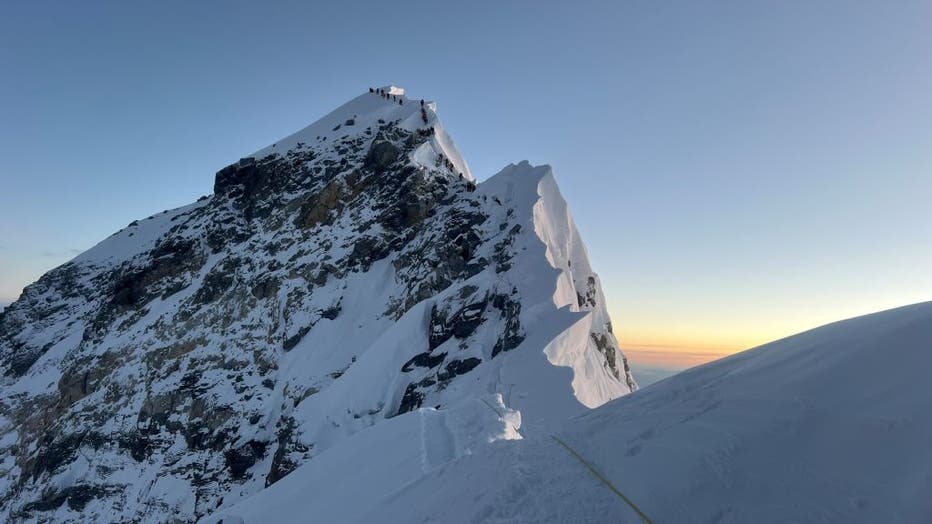Mount Everest, the world's tallest mountain, is still growing — here’s why
LOS ANGELES - Mount Everest, the world’s tallest mountain at 29,032 feet, continues to grow, and researchers have uncovered a surprising reason for this.
While tectonic activity is commonly cited as the cause of the Himalayas’ height increase, new research reveals that the merging of two nearby rivers thousands of years ago plays a significant role in Everest’s ongoing elevation gain.
How do rivers contribute to Everest’s height?
A study published in the journal Nature Geoscience on Sept. 30, explains that about 89,000 years ago, the Kosi River merged with the Arun River, creating a powerful combined river system. This newly formed river eroded a massive amount of rock and soil from the base of the Himalayas, about 50 miles from Mount Everest.
This erosion lightened the load on the Earth's crust beneath the mountain range, triggering a process known as isostatic rebound. The Earth’s crust, which floats on a semiliquid mantle, rose in response to the reduced weight, pushing Mount Everest and the surrounding land higher.

Mount Everest, the tallest peak on Earth, standing at 29,032 feet, continues to awe adventurers and scientists alike. (Photo by Narendra Shahi Thakuri/picture alliance via Getty Images)
How fast is Mount Everest growing?
Scientists estimate that Mount Everest is currently gaining between 0.16 and 0.53 millimeters in height each year.
This accounts for as much as half of the mountain’s annual uplift rate, meaning Everest could grow as much as 2 millimeters per year in total. Over thousands of years, this adds up significantly, explaining why Everest stands nearly 800 feet taller than its neighboring Himalayan peaks.
What does this mean for our understanding of mountain formation?
Traditionally, mountain growth is attributed mainly to tectonic activity. However, the discovery that river erosion and isostatic rebound contribute to Everest’s height adds a surprising new dimension to the study of mountain formation.
Researchers now believe that these processes play a larger role than previously thought, reshaping our understanding of how mountains like Everest grow over time.

